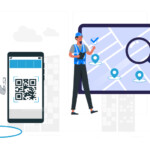As a field service company, you will be constantly on the lookout for new temporary staff to work on the new projects. Though there are thousands of temporary employees who are trying to get hired, finding the right fit is a challenge.
When working with staff on hourly basis or project basis, another challenge is Time and attendance tracking. Keeping a track on your employees as well as temporary staff is tiresome as well as exhausting process, especially when it comes to overtime hours.
Whether your company relies on temporary staffing agencies or an in-house team for hiring provisional employees, the best time tracking software can play a vital role in helping your company seamlessly integrate new workers into your payroll.
Below, we offer a few keys on how time tracking apps and software can help you best manage hourly and temp agency workers.
Time Tracking for Temp Agency Workers
Temporary employees can either be hired directly by the company or sourced through the services of a temporary staffing agency, also known as a temp agency.
Relying on temp agencies can expedite the process of temporary hires, especially when businesses urgently need to add to their workforce. Obviously, companies that choose to hire agency-provided temp employees will have to pay a fee that is over and beyond the regular compensation associated with an employee salary or hourly wages. However, using temp agencies can help companies can save time and money that is often associated with the recruiting process. In many cases, and especially for temp workers, the fee charged by a temp agency might be small compared to savings that can result from hiring workers quickly.
Integrating temporary workers into your business comes with its own sets of challenges. Effective onboarding programs need to allow temporary workers to understand their roles and responsibilities in the fastest possible manner. When hiring employees for a 1-2 month period, it certainly doesn’t make sense to have a 3 week training period. Also, time management policies and procedures for temp workers can present a problem as well.
Employee time fraud costs businesses around 5 percent of their total revenue with average losses of $140,000. Because temporary employees don’t have the incentive of impressing their employees in order to get promoted or “climb the corporate ladder”, common time fraud practices such as buddy punching might be more commonplace. One study found that employee time fraud explicitly increases with temporary workers and seasonal staff. An employee who knows that he or she will only be hired for one month might be more motivated to find strategies to artificially boost their earnings.
To avoid these potential losses, businesses from all industries would do well to incorporate time and attendance software options that are specifically designed to work for temporary employees. Digital time cards are one example of a time management solution that can help to prevent employee time fraud while allowing your business to stay compliant with the specific rights of temporary workers which are often governed by laws that vary from state to state.
Digital time cards are similar to the more traditional punch cards, though they differ in that they can help avoid common pitfalls associated with paper-based systems. Human errors such as the loss or destruction of records and incorrect time punching, coupled with the ease of time fraud associated with these systems can lead to business losses. Furthermore, paper punch cards also create accountability issues and are extremely time-intensive for HR employees.
Digital time cards can allow employees to clock in from anywhere a Wi-Fi signal is present. This can be extremely important for businesses that rely on remote workers. Unique login processes and passwords can help to avoid time fraud practices. In some cases, businesses might even consider incorporating biometric log-in practices such as fingerprints that can be tied together with digital time cards.
Lastly, digital time cards simplify the process of recording the number of hours worked by each employee. This can be extremely helpful when it comes to tallying up overtime hours that are worked. Human resource personnel can also modify hours in the system if irregularities are discovered, thus further reducing the probabilities of time fraud and other time and attendance anomalies.
Time Tracking for Hourly Workers
Similarly, the same time and attendance software options can also be useful for managing your hourly employees. The latest Labor Department data shows that almost 80 million Americans, or close to six out of every ten employees, are paid on an hourly basis. There are both benefits and drawbacks to hiring hourly wage employees. One of the biggest challenges to managing hourly employees, however, is efficient and accurate time tracking. Keeping a fair and accurate record of hours worked is easiest with the help of smart time and attendance and/or workforce management systems. These digital tools reduce the chance of errors and ensure accurate payrolls.
Hourly employees will most likely be accustomed to filling out paper time sheets. This familiarity will make for a relatively smooth and easy transition to digital time sheets, as they look and work in almost the same fashion. For remote employees, digital time sheets can be shared via Google Docs and accessed on their smartphones. For employees who work in a brick and mortar business, placing a tablet or iPad as a clock-in kiosk can allow for streamlined time and attendance tracking that also cuts back on time fraud vulnerability.
Businesses that rely on hourly and temp agency workers should consider making the transition to digital time and attendance software options. Not only can this save you time and money, but it is also an essential aspect of the digitalization of the workplace.


